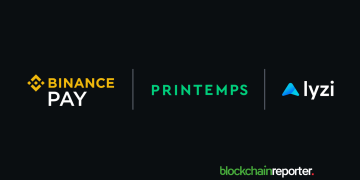What Is Blockchain 3.0?
From the inception of blockchain technology, the concept of distributed ledger technology (DLT) has been transitioning from the basics to an idealistic structure that intends to change the complete dynamics of the digital space, for the better. While providing users with smart contracts and dApps in the second phase of the blockchain revolution, the inevitable dynamism of the industry would see the adoption of blockchain 3.0 as its advantages become widespread.
Blockchain 3.0 is considered to be a term referring to the endeavors taken to solve the present issues taking place within the sphere of blockchain, particularly the problems dealing with interoperability as well as scalability, and the others related to privacy and so on.
Blockchain 3.0 Scalability
The present scalability problems within the sector of blockchain are open to everyone. Apart from the vulnerable throughput (7 per-second transfers of Bitcoin in comparison with confronting 2000 of Visa for example), the blockchains that you use proof of work (PoW) consensus go through several other scaling issues because of their energy needs in terms of mining. With the blessing of new blockchain 3.0-based initiatives, many solutions are now available for the issues related to this space.
Layer 2
Normally categorized as layer 2 (solutions are being created to be integrated into the present blockchain protocols). The respective solutions efficiently normalize the transaction load over a blockchain in the case of a peer-to-peer (P2P) network to minimize the bloat along with increasing the throughput of the blockchain. Many Bitcoin-based transfers, presently move through the comparatively unique layer two-based lightning network. A similar solution for blockchain 3.0 is being utilized by Ethereum, named plasma.
Consensus Mechanisms
On the contrary, a few venues are wasting their time on re-manufacturing the blockchains that are scalability-focused. Zilliqa, for instance, is a promising smart contract venue that enforces sharding as well as an exclusive consensus mechanism (taking into account BFT or Byzantine Byzantine Fault Tolerance) to deliver throughput that is considerably prestigious in comparison with the conventional blockchains. Zilliqa it’s not the only one in this race as many other venues have plunged into this sector in which one is Libra of Facebook (which utilizes a form of BFT) while Ethereum is another which is moving toward a proof-of-stake (PoS) consensus mechanism along with the others.
Directed Acyclic Graphs (DAGs)
Precisely, some projects are completely driving getting out of the blockchains. Nano and IOTA’s foundation, for example, is known as Directed Acyclic Graphs (DAG) rather than a blockchain. DAGs require an entity to validate some other transfers while creating a transaction. Performing this task makes DAGs more effective with the growth taking place in the network.
Blockchain 3.0 Interoperability
With numerous exclusive blockchains, the interaction between them counts as a significant factor. Unfortunately, an interoperability protocol is a thing deficient in the industry and the community is not facilitated by it. Another time, several projects and companies are focusing on this problem from many angles. Polkadot, Wanchain, as well as Aion, are categorized as projects based on Web 3.0 blockchain with a specialization in interoperability.
The objective of the respective projects is to offer a mechanism facilitating the transaction of data as well as assets in an inter-blockchain environment without requiring a third party that is centralized enabling a direct transaction between the blockchains.
Blockchain 3.0 Privacy
Many crypto projects are supported in terms of their protocols’ privacy. Zcash, Dash, and Monero, all comprise diverse stages of anonymity. MimbleWimble seems to be the prominent blockchain 3.0 privacy protocol with Beam and Grin as a couple of its initial implementations. It is known as an exclusive blockchain protocol that offers blocks that comprise the signature data, inputs, as well as outputs.
The Future of Blockchain 3.0
Several of the endeavors related to blockchain 3.0 that are mentioned above are even now in the state of infancy while some other projects haven’t been mentioned because of the lack of time. At the moment, it is quite hard to determine which of these solutions of Web 3.0 blockchain have the potential of dominating the sector, it is expected that substantial information would be provided by bright minds in the future regarding the decentralized world and Web 3.0 blockchain’s future.
Blockchain Web 3.0 Projects
Here are some of the most prominent Web 3.0 blockchain projects.
Neblio
Neblio endeavors to construct a network comprising the developers of business blockchain to provide convenient APIs as well as instruments for other consumers who are non-technical. A decentralized peer-to-peer (P2P) nodes network facilitates exchanging of information via proprietary transfer modules. The mesh nodes are locked together by relay. In each of the nodes, a copy of the whole blockchain to enhance dApps’ functionality. The transactions are rapidly processed through the scalable network.
Wanchain
Wanchain is known as an all-inclusive cross-chain protocol recording intra-chain as well as cross-chain transfers. The goal of this Web 3.0 blockchain project is to reconstruct the economic infrastructure, permitting aloof networks ( responsible for the provision of banking services) to interact with each other. With the ring signature, the senders are offered anonymity in transactions. The recipients after transfers become anonymous with exclusive addresses.
Lightning Network
Lightning Network is considered to be a second-tier-based decentralized payment protocol that runs on a blockchain’s top. It utilizes smart contracts that provide secure, high-speed, as well as high-volume micro transfers. It permits atomic swaps across the chains, low costs, scalability, as well as rapid payouts. It additionally utilizes SegWit for the protection against transactions’ malleability.
EOS
The next Web 3.0 blockchain project is EOS which provides open-source software enabling the down and up scaling of dApps. The blockchain architecture utilized by it enhances scalability and excludes consumer fees along with permitting the convenient organization of dApps. It additionally offers inter-blockchain interaction. Server hosting, cloud storage, as well as bandwidth can be accessed by the developers.
NANO
NANO protocol (which was previously known as Raiblocks) utilizes a structure where every single customer account contains blockchain ledger balances with a regular update on the entirety of the blockchains operating on the respective network with a DAG’s use. Infinite scalability, as well as swift transfers, are the specialty of Nano. The platform has a charges-free structure when it comes to buying with the currency.






















